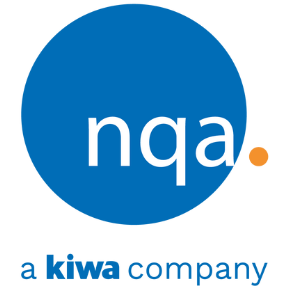ISO 45001: Top Tips – One Year To Migrate
Although a year may sound like a long time – in our busy work lives, it will disappear quickly, so we need to make the most of this precious final preparation time.
NQA are here to help you manage your migration to the new standard. We have run webinars (you can watch the videos here), scheduled events for 2020 and dedicated two whole months to health & safety training.
Take a look below at some tips on how you can effectively manage your migration to ISO 45001:
Identify where you are now
What have you already got in place? What is working well within your OHS system?
Be honest with yourself and your organization – we are not trying to create blame, just a realistic review of what needs to be improved or implemented.
Talk to fellow workers and get their views of what the priorities are and what already works. Include contractors and agency members, as appropriate in your discussions. Although it's common to ask leadership, it's often the workers 'on the ground' that have the most knowledge of what the company needs to tweak and what works well due to their involvement in the organization's day-to-day operations.
Consider: what is the system trying to achieve by the various clauses and requirements?
I believe that it's always worth conducting a formal GAP analysis between your existing system and the new ISO 45001 standard clauses to see where the differences lie and how your management system can be updated to reflect the new requirements.
This can be done internally or with the support of an external consultant. For existing NQA clients we have created a GAP analysis document for you to complete, prior to your migration assessment. This will help you to identify any gaps or weaknesses prior to your audit.
Plan for change
We are a big fan of the PLAN > DO > CHECK > ACT cycle...it's something we reference regularly as a way of checking and maintaining your systems.Whatever the results of your review / gap analysis – make a detailed plan of what needs to be done, who is to do it and when – communicate and discuss the plan to get the required support from everyone, including the management of your organizations.
Resources will need to be allocated – not just financial but time for those involved.
It sounds obvious but please make sure you have access to the ISO 45001 standard – it can be difficult to succeed if you don’t know the requirements. You can purchase the standard from ISO here.
Set realistic priorities within the plans – allow for some flexibility. The standard is not a rigid document, it's designed to fit around your systems and you can do this however works best for you as long as you can show that you are meeting the requirements.
Monitor progress regularly – don’t assume that because you have an agreed plan that everything is developing as agreed. A lack of information or feedback does not necessarily mean achievement or progress.
Do
Make sure that you explain the benefits of the plans and system developments. Implement the actions and plans together, not just individually.
Listen to suggestions and concerns – they could be learning points. Others may need your support and you will certainly need theirs.
Check
Does the action or change deliver the benefits as intended, or does it create increased risks or more issues than it resolves?
Your existing system can help you with:
-
Conducting internal audits
-
Monitoring results and performance and
-
Effective communications
Act
If something is not delivering the intended benefit, review it and try something else. Make sure you are continually improving and acting upon the findings you raise internally.
Remember that workers and people are the core protection group of the OHS system.
Migration Assessments
I can't stress how important it is not to leave your migration and assessments until the last minute. By booking in your audit with time to spare this will give you time to rectify any potential findings before the deadline and will limit your risk of a period of no certification.
As required by UKAS, migration assessment durations must have additional time allocated to enable the assessment of the new requirements of the standard. Migration audit durations from all UKAS accredited certification bodies will be increased by a minimum of one day for ISO 45001 as compared to OHSAS 18001.
NQA support
NQA are here to help and support our clients, both current and future, and we have plenty of materials, guidance documents and information to help you on your journey.
-
Click here for information on ISO 45001
-
Click here to download a migration timeline
-
Click here to download a GAP Guide
-
Click here to download an Implementation Guide
-
Click here to see past webinars and videos
We also offer a wide range of CQI and IRCA approved Health & Safety training which you can find here. Did you know that NQA clients are entitled to FREE e-Learning and 10% off ANY of our public or in-house training courses? Call us on 0800 052 2424 (option 3) to take advantage.
If you would like further information on this topic or would like to get your migration audits booked in please email us here or call 0800 052 2424 and a member of the team would be happy to help you.
Author: Terry Fisher - Occupational Health & Safety Principal Assessor at NQA


